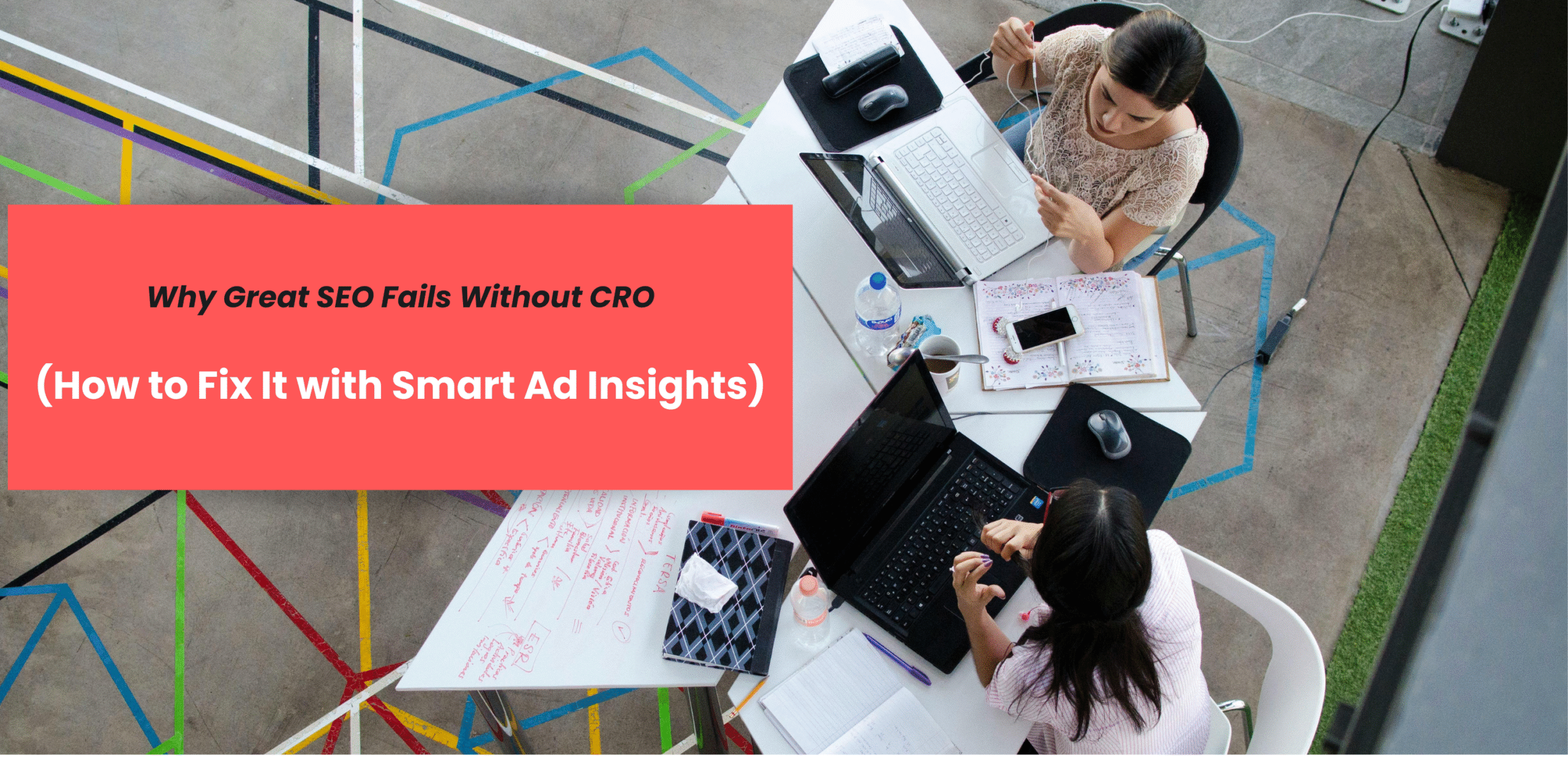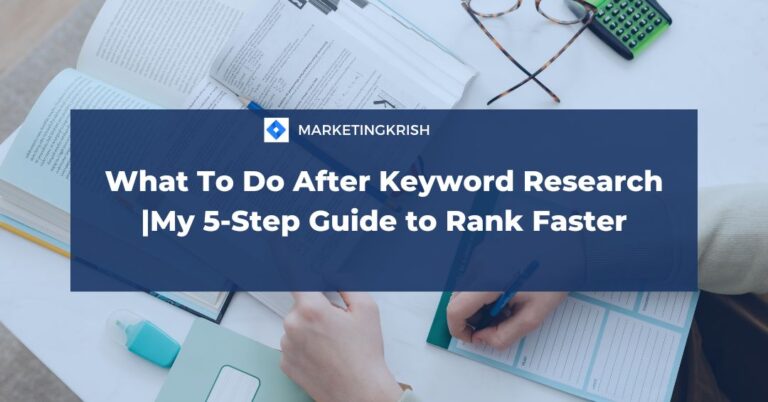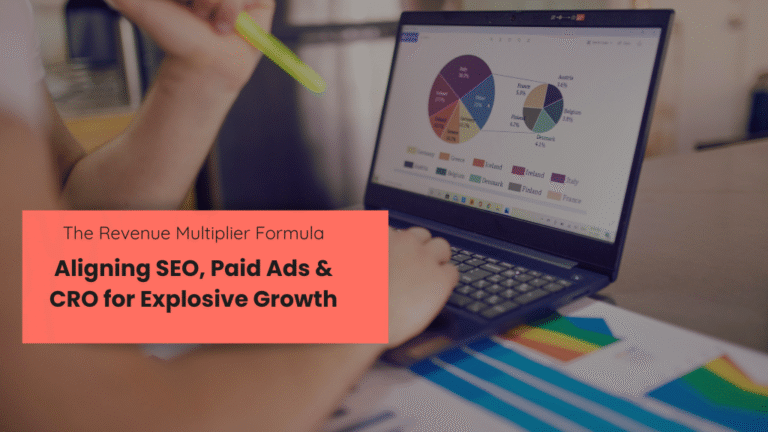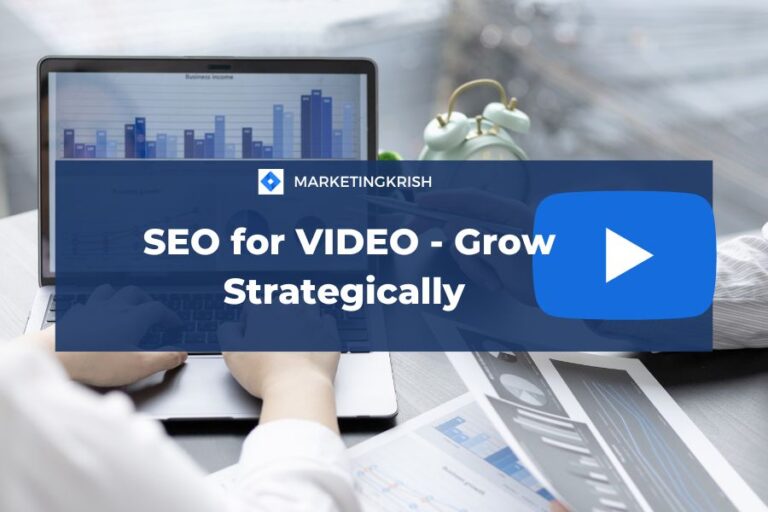Why Great SEO Fails Without CRO (How to Fix It with Smart Ad Insights)
You’ve invested in SEO and conversion optimization, your website ranks well, organic traffic is climbing, and impressions are up.
Yet… revenue is flat.
That’s one of the most common growth gaps we see as a digital revenue optimization agency offering SEO services in India.
The truth: great SEO without CRO is like a car without fuel. It looks good, but it doesn’t move your business forward.
Traffic doesn’t pay the bills. Conversions do.
To truly increase website conversions, your marketing needs more than visibility; it needs intent-driven landing page optimisation, strong messaging, and data-backed insights.
In this guide, we’ll uncover why SEO often fails to translate into real growth, and more importantly, how to fix it using smart ad campaign analytics that turn clicks into qualified leads and measurable revenue.
1. Why SEO Alone Can’t Drive Real Growth
EO is about visibility helping people find you online.
But discovery means nothing if visitors don’t take action.
Here’s what SEO alone can’t fix:
- Weak messaging that doesn’t persuade.
- Confusing page layouts or poor UX.
- Generic CTAs like “Learn More” that don’t inspire clicks.
That’s where Conversion Rate Optimization (CRO) becomes essential. CRO ensures that once people land on your site, they’re guided clearly toward a conversion not left guessing what to do next.
We’ve seen this first-hand in projects like the Innerwear Brand Organic Traffic Growth case study, where strong SEO visibility initially didn’t translate into sales. After optimizing the landing page messaging, restructuring CTAs, and refining layout based on CRO insights, conversion rates jumped significantly without additional ad spend.
By combining strong messaging, strategic landing page optimisation, and intent-focused design, you not only attract traffic but also increase website conversions and generate qualified leads that drive consistent growth.
2. The Fix Starts with Understanding Behavior
The first step to closing the SEO–CRO gap is understanding user intent and that’s where ad insights become your shortcut.
Unlike SEO services in India, which can take months to show behavioral trends, paid campaigns offer instant analytics that reveal what your audience truly responds to.
We applied this in a healthcare campaign featured in our Scaling Organic Growth & Revenue in Healthcare case study.
Step 1: Mine Your Ad Data for Intent Signals
Dive into your campaign analytics from platforms like Google Ads, Meta Ads, or LinkedIn Ads, and note:
- Which keywords or ad copies generate the highest CTR
- Which headlines or offers actually drive conversions
- Which audience segments engage most with your brand.
Fix: Use these winning insights to refine your SEO and conversion optimization strategy.
Update your meta titles, landing page optimisation, and above-the-fold content using what works best in your ads.
3. Fixing CRO with Ad-Driven Insights
Ad insights are the missing puzzle piece that make CRO strategic not just guesswork.
Step 2: Use High-Performing Ad Creatives to Guide CRO Changes
Every successful ad reveals what emotionally connects with your audience.
For example:
- If your best-performing ad headline is “Save 10+ Hours Every Week with Automation”, your SEO landing page should open with that exact pain point.
- If video ads showing your product in action outperform static images, test similar visuals on your homepage hero section.
We applied this approach in the Beauty & Skincare Organic Revenue Growth project.
Our ad data showed that emotional messaging (“Feel confident in your skin every day”) outperformed product-focused copy by 3x. Once we aligned the SEO landing page copy and visuals with this tone, conversions increased by over 150% proving that CRO guided by ad insight drives real ROI.
Fix: Don’t start CRO tests blindly with what’s already proven in your ads.
Step 3: Build Conversion-Focused Layouts Based on Ad Behavior
Analyze where ad visitors drop off on your landing pages.
Use tools like:
- Hotjar or Microsoft Clarity → See scroll depth and click heatmaps.
- GA4 + UTM tracking → Identify which ad segments bounce most.
Then, refine your layout:
- Move high-performing CTAs higher on the page.
- Remove distractions near your main offer.
- Add trust elements (reviews, badges, guarantees) around ad-driven landing pages.
Fix: Make the path from ad click → conversion frictionless.
4. Syncing SEO, CRO, and Ads into One Feedback Loop
Once you align SEO, ads, and CRO insights, you stop guessing and start compounding real growth.
Here’s how the insight loop works:
- Ads test messaging fast.
- SEO pages adopt winning ad insights leading to better engagement and lower bounce rates.
- CRO tests refine page design boosting the conversion rate.
- Data then loops back to campaign analytics enabling smarter targeting and more qualified leads.
Fix: Run this loop monthly. Review ad reports and SEO analytics side by side to identify the content themes, landing page optimisation patterns, and CTAs that consistently drive top performance.
Over time, this creates a self-improving system SEO attracts, CRO converts, and ads inform both. That’s how you move from traffic growth to real revenue growth through data-driven SEO and conversion optimization.
5. Real Example: From Ranking to Revenue
In one of our recent projects Inner brand traffic organic growth a client ranked #1 for several competitive SEO keywords, but their conversion rate was stuck at just 1.2%. Despite strong visibility, the site wasn’t generating enough qualified leads.
Here’s the fix we implemented through SEO and conversion optimization:
- Analyzed ad insights and found that “Save 10 Hours/Week” messaging had a 3x higher CTR.
- Rewrote organic landing page optimization copy around that high-performing hook.
- Updated CTAs from “Learn More” to “Start Free Trial.”
- A/B tested hero images using ad-informed design variations.
Result:
Within 45 days, conversions jumped from 1.2% to 3.4%, generating 2.8x more leads without increasing SEO spend or campaign budget.
This is the power of aligning SEO analytics, CRO testing, and ad campaign data into one cohesive growth system.
6. Common SEO–CRO Mistakes (and the Fix for Each)
|
Mistake |
Fix Using Ad Insights |
|
Optimizing SEO for search volume, not intent |
Identify top-converting ad keywords → build SEO pages around them. |
|
Using generic meta titles |
Use emotional ad headlines that already drive clicks. |
|
Weak CTAs |
Test ad-style CTAs like “Get My Free Demo” on key pages. |
|
Ignoring mobile experience |
Check ad device performance → optimize SEO pages for top-performing devices. |
|
Treating SEO, CRO, and Ads as silos |
Use a shared reporting dashboard (Looker, Data Studio) linking all three. |
7. The Long-Term Fix: Integration Over Isolation
The future of digital growth isn’t about mastering one channel, it’s about connecting them strategically.
- SEO attracts qualified visitors through smart visibility.
- CRO converts those visitors efficiently with intent-driven design and messaging.
- Ads provide real-time insights and analytics to refine both.
Together, they create a data-driven growth engine where every visitor, click, and conversion fuels the next. This isn’t marketing guesswork; it’s measurable, repeatable, and scalable revenue optimization powered by SEO and conversion optimization working hand-in-hand.
Final Thought
“Ranking means nothing if your visitors don’t act.”
Traffic is potential. Conversion is power.
When SEO brings the right people, CRO turns them into customers, and ad insights keep you improving your growth becomes predictable and profitable.
That’s not just fixing SEO.
That’s engineering digital revenue growth.
FAQs
- Why does great SEO sometimes fail to grow revenue?
Because SEO only brings people to your site it doesn’t make them act. Without CRO, visitors find you but don’t convert, turning visibility into a vanity metric instead of profit.
- How can I tell if my problem is with CRO, not SEO?
If traffic and impressions are rising but leads or sales stay flat, your conversion experience is weak. Analyze bounce rate, engagement, and CTA clicks not just keyword rankings.
- What’s the fastest way to fix low conversions from SEO traffic?
Start by aligning page intent with visitor needs. Use insights from top-performing ads to refine your headlines, copy, and CTAs so they match what truly drives action.
- How do ad insights improve SEO performance?
Ad data shows what messaging, visuals, and offers get the most engagement. Applying those proven elements to SEO pages it improves click-through rates, dwell time, and conversions.
- What simple CRO changes make the biggest difference?
Tweak what matters most: shorten forms, simplify navigation, add social proof near CTAs, and replace generic “Learn More” buttons with benefit-driven prompts like “Get My Free Demo.”
- How can ad insights make CRO testing more effective?
Use ads as quick experiments. The headlines and visuals that drive ad clicks are the same ones likely to convert on your site and use them as A/B test starting points.
- How do I make SEO, CRO, and Ads work together?
Track them on one dashboard. Let ads test messaging, CRO refine user flow, and SEO amplify what converts. When insights flow both ways, every channel performs better.
- What’s the long-term solution for steady revenue growth?
Build an integrated system: SEO attracts, CRO converts, and ad insights keep improving both. This creates a self-optimizing growth loop that compounds over time.







